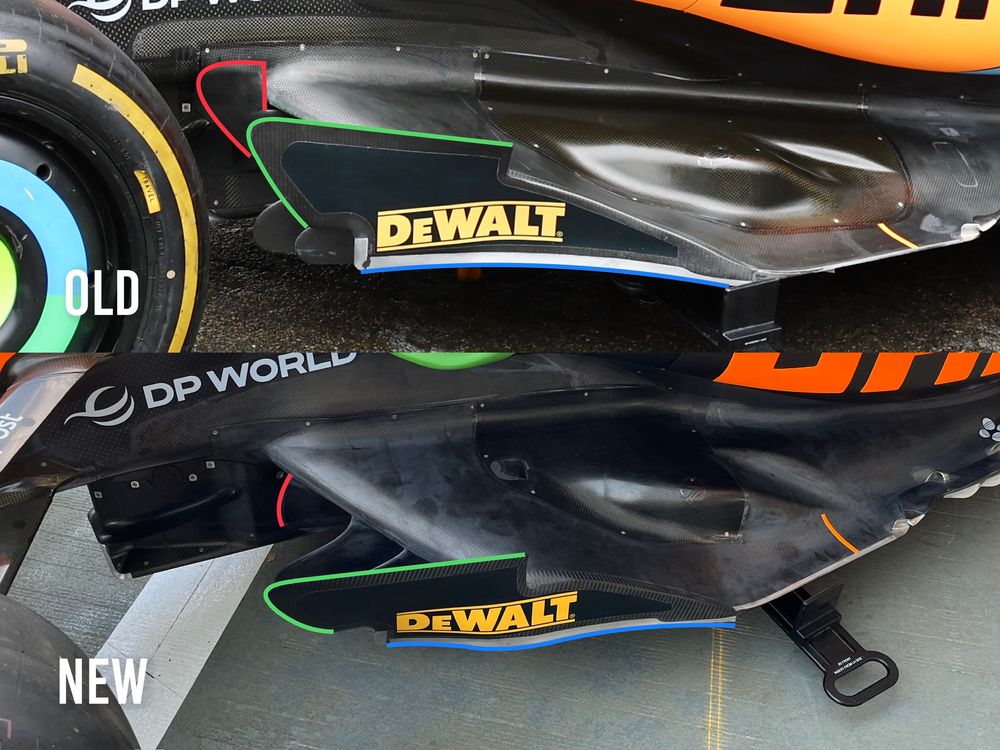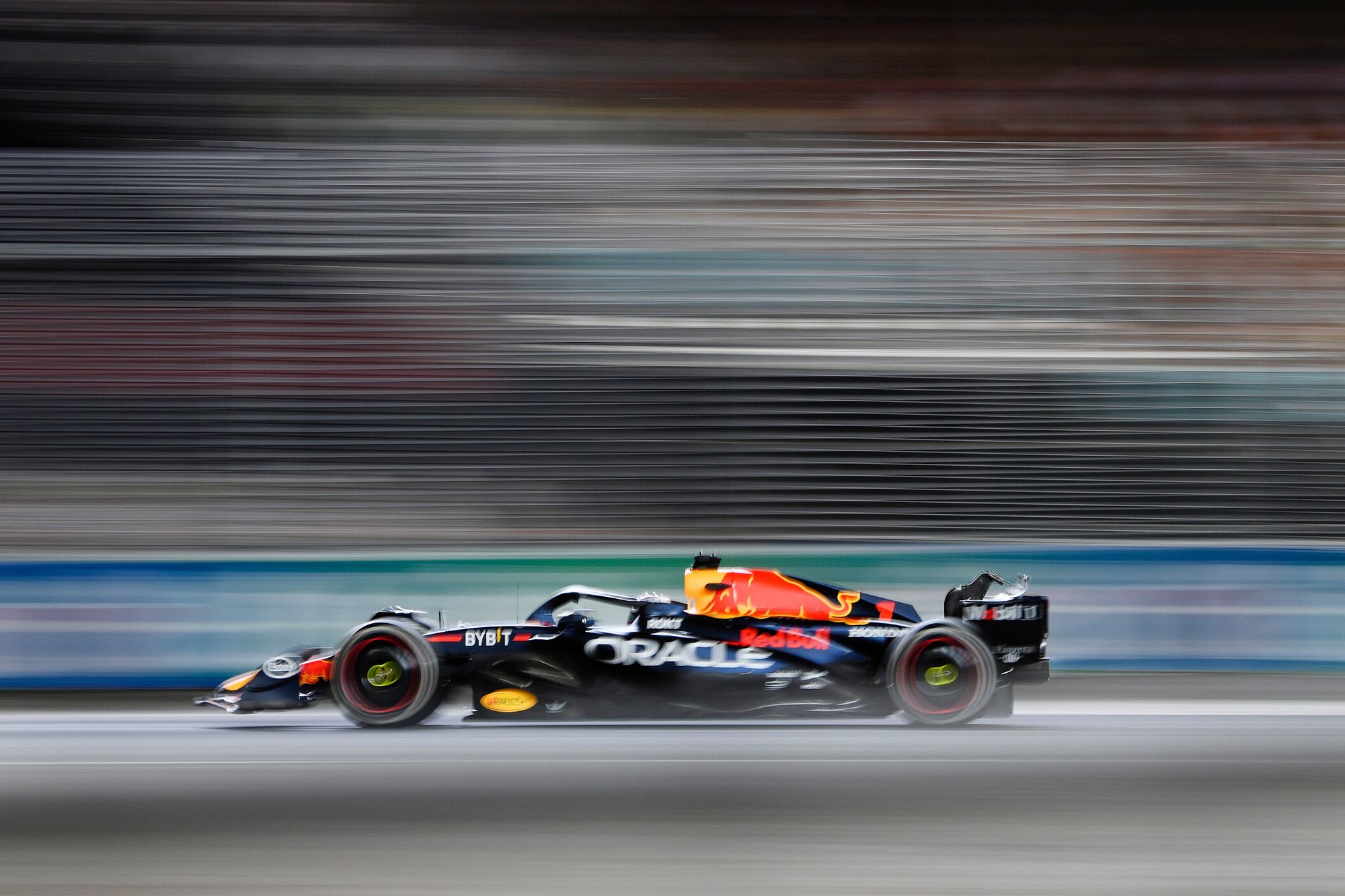Up Next

Lando Norris's second-place finish in Singapore might have been McLaren's first podium in four grands prix, but it nevertheless continued an impressive upward Formula 1 trend that stretches even further back, to the start of July and the Austrian Grand Prix.
Just as that Austria uptick came on the same weekend McLaren introduced the first part of a major upgrade for its MCL60, so too its Marina Bay rostrum followed the introduction - on Norris's car - of its last significant package of 2023.
As a result, big things are expected of McLaren this weekend at the Japanese GP, where both Norris and team-mate Oscar Piastri will have that upgrade.
F1 championship leader Max Verstappen thinks Norris could be a serious threat in qualifying at least, while Mercedes' George Russell reckons the Norris-McLaren combination might end up best of the rest behind Red Bull "with their high-speed performance".
"When you look at Silverstone in the 230km/h region corners, they were exceptionally quick," said Russell. "They were two, two and a half tenths quicker than the majority of the field in each of those corners, a tenth quicker than Red Bull in those corners."
So just what is it about the MCL60, and what McLaren has focused on with its latest upgrade, that's got its rivals talking it up so much? Gary Anderson - who's among those who's been impressed by McLaren - explains all.
McLaren started the 2023 Formula 1 season with lots of problems but has reacted better than any other team.
The developments keep coming, with the latest package in Singapore (albeit one that McLaren says is its last major upgrade of the season), and it seems they are all working as planned. The characteristics they will produce should also mean the McLaren MCL60 works well at Suzuka this weekend.
When you introduce a big package, as McLaren did in Austria earlier this year, it takes time to optimise all the other small details around it. This is what we have been seeing over the last few races.
For Singapore, McLaren arrived with a bag full of goodies and with a little help from Carlos Sainz in controlling the race pace, those parts allowed Lando Norris to claim a fine second place. A win for him must just be around the corner.
Norris ran the latest package while team-mate Oscar Piastri was one step behind, with the pace difference reckoned to be around the three-to-four tenths mark. But comparing the two cars visually, there is not a lot of difference. This points to the fact that it's the sum of the parts that makes the difference and there is no magic ‘Red Bullet’ concept.
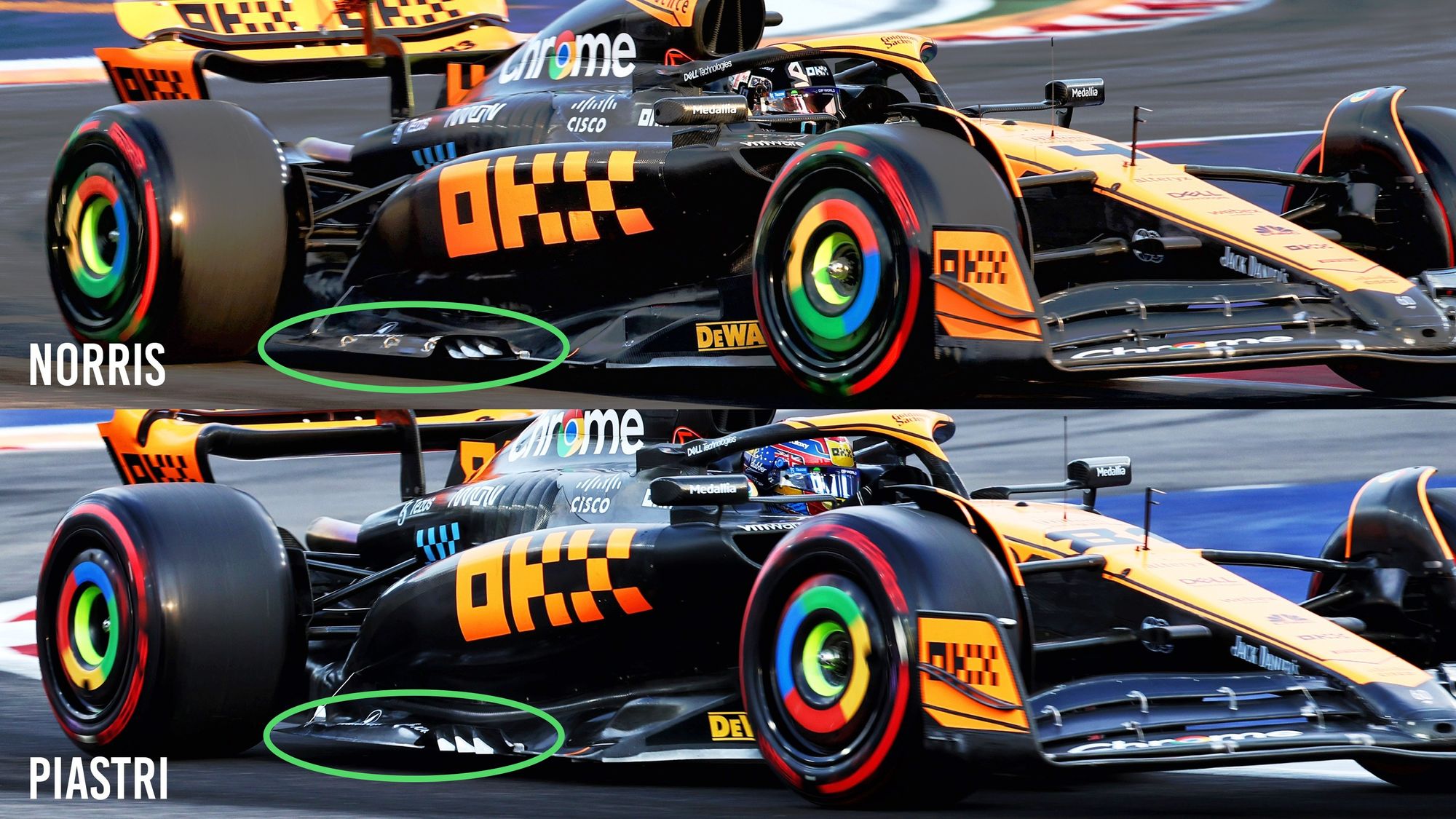
The front wing looks very similar, which is not surprising as that was a new package just a few races ago. However, it is the parts further downstream (green ellipse) that would be affected by that previously revised front wing flow structure.
As you can see, the flow vis on the outer end of the wing will be carried rearward in the airflow around the front tyre, ending up on the new components that have been optimised to maximise McLaren’s performance.
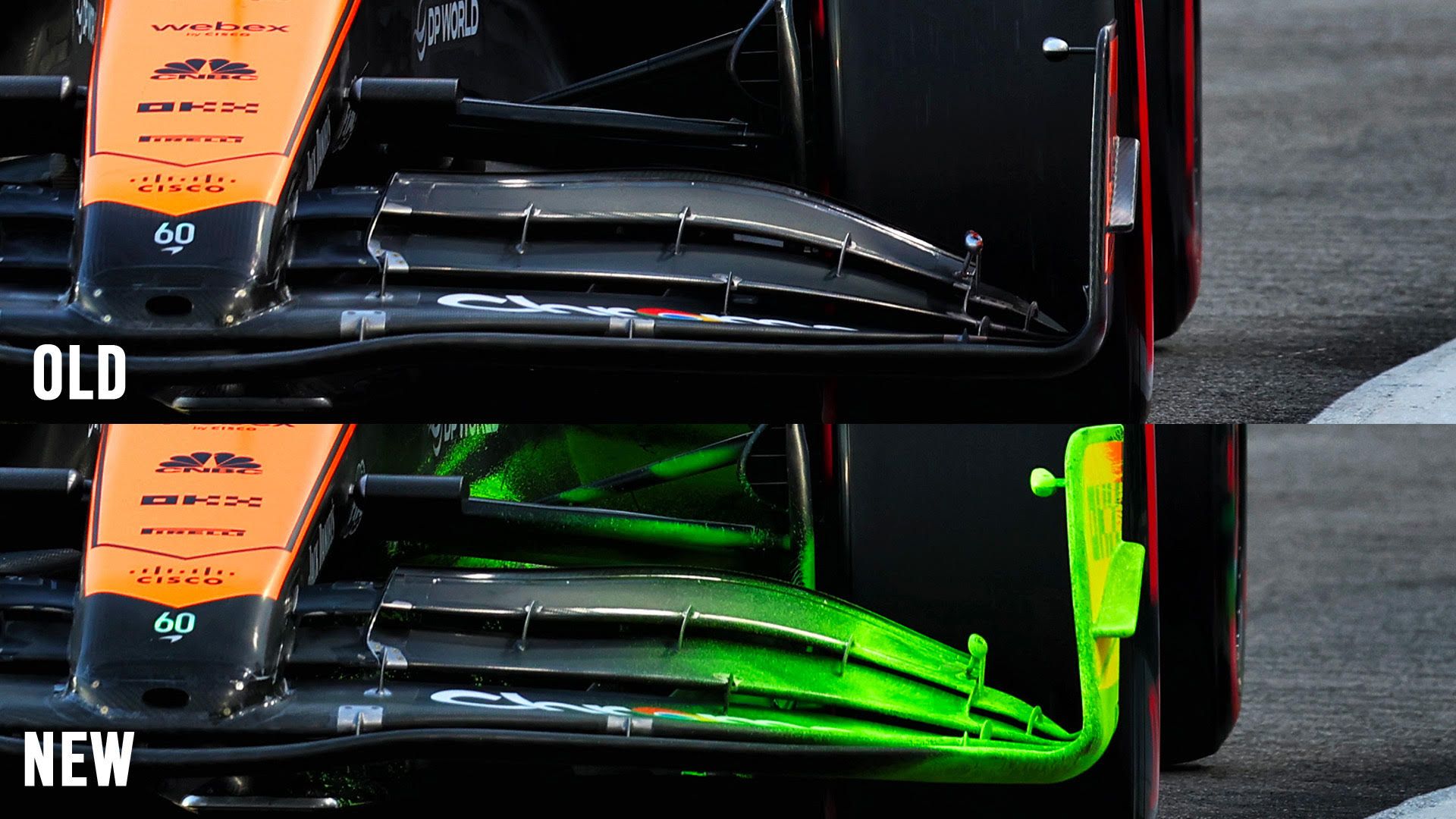
This area of the underfloor leading edge splitters has been revised to alter the flow distribution both into and over this leading edge profile.
The inner splitter highlighted with the red line is now reduced in height and so has less effect on the upper surface flow direction. Although the picture is at a different angle, the outer splitter highlighted with the green line also looks lower as the top of it appears to run parallel with the DeWALT decal. The lower edge also looks like it takes on a different curvature, blue highlight.
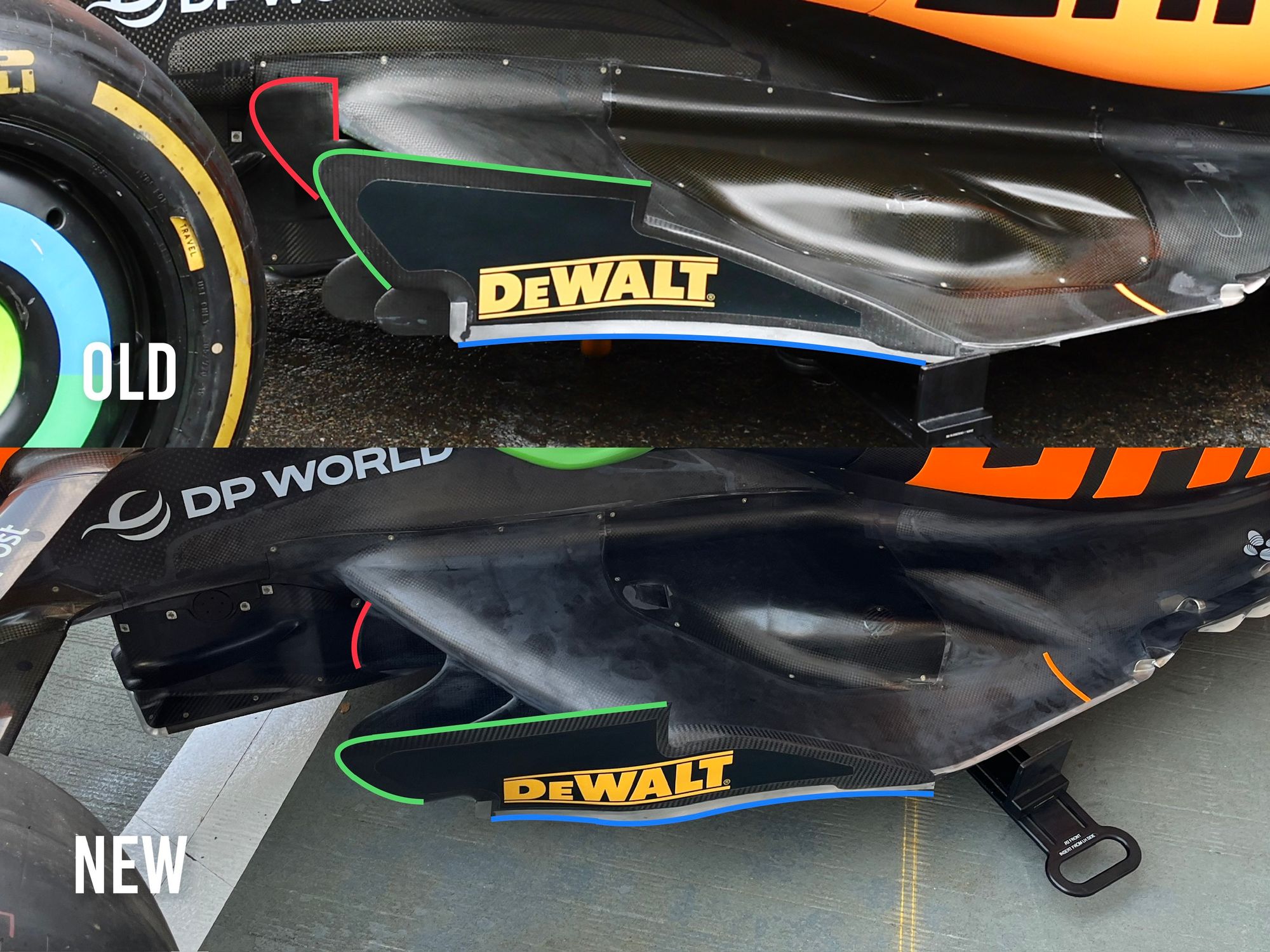
All of this optimises the revised front wing flow structure direction to improve the performance of the underfloor leading edge. To me, it looks like the McLaren is not having to work it quite so hard with these splitters to get the flow direction the team wants, so in effect leaving more energy in that airflow.
Further along the edge is the main development area. Sealing the sides of the floor consistently simply gives more underfloor downforce, and with that grip.
But it’s critical that this is not as much of a mechanical seal as an aerodynamic seal. A mechanical seal is a bit like a light switch - it is either sealed or it is not - whereas an aerodynamic seal is more progressive, a bit like a dimmer switch.
On the older version, this floor edge trip was very abrupt (red highlight) and fairly short. The new version is longer and more in line with the floor-edge profile, meaning that it will have more influence on the airflow going under the floor edge (blue highlight in old version).
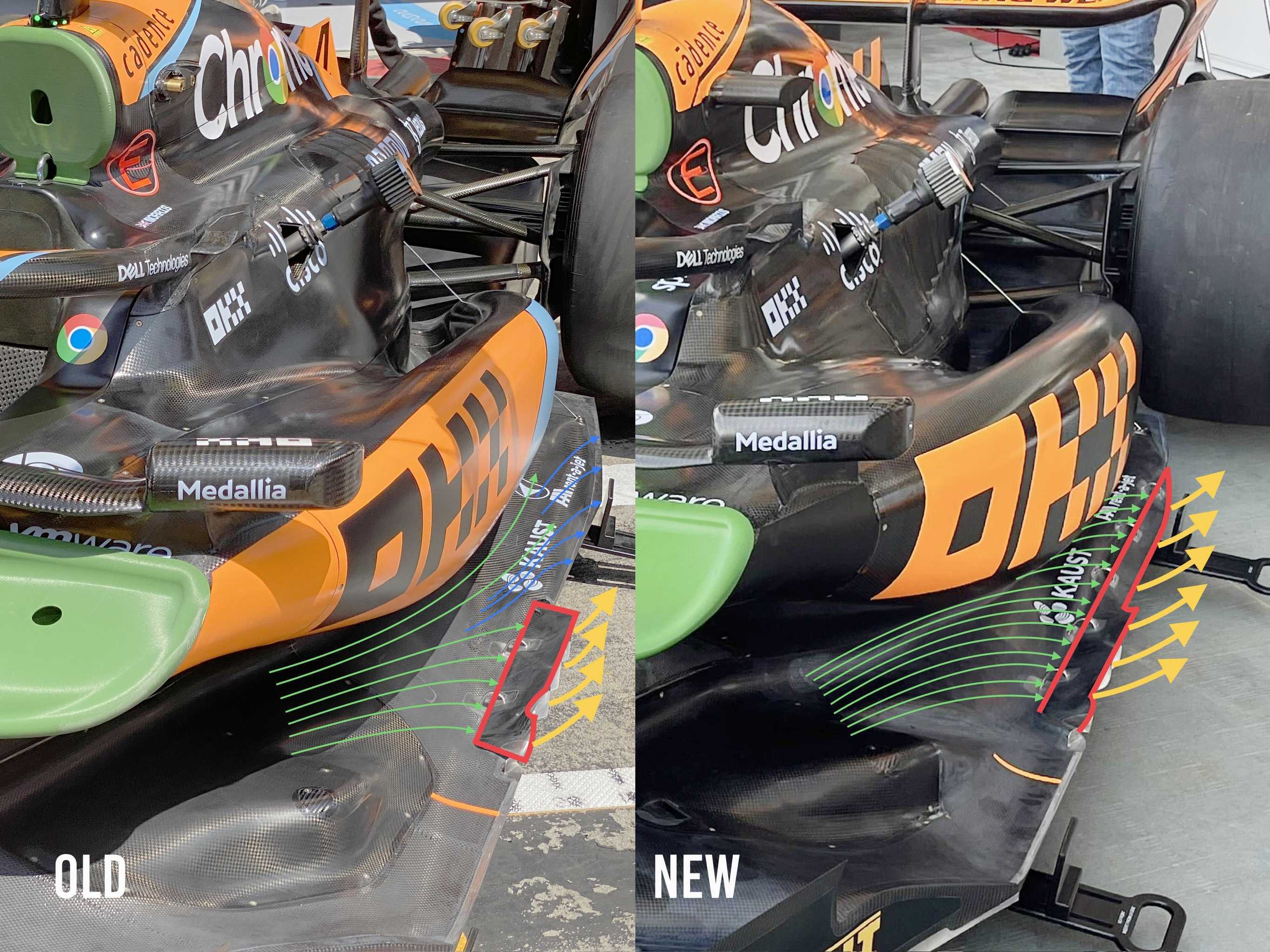
This means that, in effect, it will extract more of the upper surface flow (green highlight) through the small slot gap and this flow will then be pulled around the outside of the rear tyre as the tyre displaces the air between itself and the track surface.
For a team that started the season seemingly lost, McLaren has recovered like no other and these developments should put it in a good place at the Japanese Grand Prix. With Suzuka's fast, flowing corners, underbody downforce and two committed drivers, this is exactly what you want.
We will find out in the coming days.


